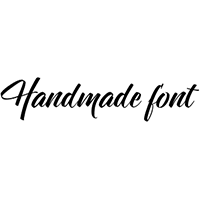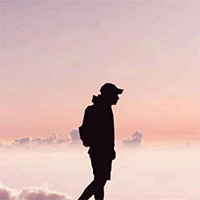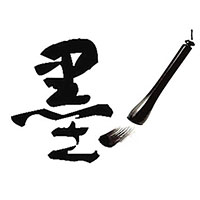ScreenFonts: Stoker, Dead Man Down, The Incredible Burt Wonderstone, Tyler Perry's Temptation, Wrong

Don't you hate it when after you've finished something you discover new elements that would have made it even better? This has happened with ScreenFonts posts too. For example I once revisited the posters for The Road, originally reviewed in the November 2009 episode, in the subsequent one so I could include some alternate versions. This time I discovered a beautiful painted poster by Caspar Newbolt for LUV – discussed for January 2013 – while researching the poetic collaterals for Pavilion.
These movie posters for Pavilion are simply stunning. Caspar Newbolt succeeds brilliantly in "(…) capturing that feeling of the abstract, aimless ennui of what it was to be young, with almost no sense of responsibility at all". The dreamlike images use transparency to great effect. In his excellent post on the IFP website Caspar somewhat mysteriously reveals that the imagery references Robert Zemeckis's 1985 film Back to the Future. However he doesn't want to spoil the details of the film by explaining the exact meaning of the various elements in each design. Seldom have I seen movie collaterals that have such a sensitive, poetic quality yet look perfectly mainstream. I realise I often use this term in a rather derogative way, but in this particular case it's a compliment.
Here Caspar adds an element of repetition to the transparency. The poster is subdivided in four horizontal bands featuring shots of the subsequent stages of a movement, mimicking the sequence of images in moving film. The resulting image is of an intriguing and lyrical beauty.
The movie title face on the posters is Tarzana – the idiosyncratic sans serif in Narrow and Wide widths by digital type design pioneer Zuzana Licko – with Trade Gothic Bold Condensed No. 20 as supporting typeface. Caspar explains:
Some days into the production Tim wrote another excited email stating that he was so in love with the type treatment on the posters that he wanted us to do all the type for the actual film's credit sequences. The hot pink, italic, capital letters had hit a chord with him (as we'd hoped it might), and had now dethroned the more restrained, plain, black, capitalized Futura he'd been using up until that point.
The website adds a splash of ITC Cyberkugel in the mix, one of those energetic scripts Timothy Donaldson does so well – see also the multi-weight ITC Humana Script of the unusual ITC Humana sans/serif/script combo, Flight, and ITC Riptide.
And this is the lovely alternate poster for LUV. The simple, tactile approach of the rough brushwork in bold, textured colours lends this design an intimate stillness. Having the gun smoke create the child's profile around Common's silhouette is a clever storytelling device. The all-caps display sans is PG Federal from the Public Gothic Family by multi-disciplinary design consultancy A2591. This type design has its share of problems, suffering from uneven texture and spacing, and an overly wide 'L'.
Wide grotesque sans serifs are a staple in film posters, yet the movie poster for The Sweeney threw me for a loop because the titling face was somehow missing from the FontList. Although it definitely looked familiar, I had to turn to the trusted team of type identifiers on Typophile for assistance. Sure enough the always reliable Jan Erdmann helped me find Stainless Extended, the squarish sans serif by Font Bureau senior designer Cyrus Highsmith. The blocky supporting face is the even more squarish Compacta.
It is rare that the creation of the poster plays such a prominent role in a film's promotion. But then again, the international limited edition poster for Stoker is quite special. The entire poster, typography included, is a highly-detailed pencil drawing. Grotesque, twisting vines connect numerous elements from the storyline. They provide visual clues, creating a brooding narrative. In case you were wondering, the photo-realistic portraits of Nicole Kidman and Mia Wasikowska were drawn by hand too.

The typography is actually lettering, as the text in Plantin was hand drawn as well. This creates a very cohesive and organic overall impression. Every time I encounter Plantin I am reminded of its contemporary, more elegant cousin Musee by Portuguese type designer Dino dos Santos, definitely worth checking out.
The music video for the haunting track Becomes the Color, composed by Emily Wells especially for the movie, shows the painstaking pencil-work that went into the creation of the poster. For more on Stoker's poster read Indelible Images in 'Stoker' and 'Oz' Promo Posters: Is Iconic Poster Art on a Comeback? on Yahoo Movies.
Another artist that likes moody black-and-white is alternate one-sheet for Belgian film Rundskop (Bullhead). This episode of ScreenFonts features two examples of his arresting art. The first one is the limited edition screen print for The Unspeakable Act, commissioned by Third Man Records for their Light and Sound Machine film series in Nashville, TN. I conducted a micro-interview with the artist.
Jay Shaw | "With both this project and Wrong (discussed further down this post, ed.) I was actually given a great deal of creative freedom. Both clients sent me the films and had me pitch poster concepts after I watched them. On The Unspeakable Act I was very lucky that the client accepted my first pitch and asked for no revisions. It probably had something to do with the fact that I turned in the project literally the day it needed to go to print, but I'd like to imagine they were completely satisfied with the poster."
"The Unspeakable Act is a coming-of-age story about a girl who falls in love with her older brother. The film quite brilliantly deals with the emotional turmoil and whirlwind of confusion she experiences. The image of a girl covering her face with bed sheets is meant to convey a sense of sexual awakening coupled with shame. I felt that a handwritten typographic approach would best illustrate the intimate human nature of the story and the frantic emotional journey the main characters go through."
The posters for Los Condenados (The Condemned) are a typographic throwback to the mid-nineties. Deconstructivism and the related grunge style was in full swing, with foundries like GarageFonts established in 1993, primarily as a vehicle to distribute the typefaces used in the legendary Ray Gun magazine, and Carlos and Sun Segura's T-26 promoting the grunge aesthetic. In 1994 FontFont launched its own line called FF Dirty Faces. One of my favourite designs in this collection was Hannes Famira's burnt-looking FF Mutilated, which makes an appearance on this poster. Its letter shapes were taken from little rubber stamps found in the toy department of a supermarket. Hannes printed them with Chinese ink on rough paper, digitised them and built a range of five weights out of them, two of which were licensed by FontFont.
The glowing effect applied to the type on this Glowing Letters tutorial.

Roughly in the same film genre, Last Exorcism: Part II resorts to an entirely different typographic solution on this beautiful yet chilling one-sheet. Although the letter style stems from the same time period, the mid-nineties, it trades eroded forms for sharp spikes. The main poster (not depicted) is a fairly generic solution for a horror movie. Trust me, we have seen the grimy texture and contorted bodies before. The only thing worth noting is the use of Goudy Oldstyle instead of good old Trajan.
The graphic poster created by Rich Knepprath for Anonymous Ink & Idea however is far more interesting and genuinely creepy. Ashley Bell looks menacingly over the movie title (to be honest my obsessive compulsive side is bothered that her face is shifted to the right and disturbs the symmetry in the design). An almost imperceptible cross motif is overlaid on the black monochrome image on a flat, deep red background. This makes the razor sharp white letters jump out even more. The title is set in Portcullis, designed by Brian Hunt for Margaret Chase, and released by T-26. The supporting typeface is Jonathan Barnbrook's classic Mason Serif which conveys a suitably gloomy atmosphere.
From eerie to hopeful, Girl Rising tells the stories of nine girls from different parts of the world who face arranged marriages, child slavery, and other heartbreaking injustices. Despite these obstacles, the brave girls offer hope and inspiration. By getting an education, they're able to break barriers and create change. Each girl's story was written by a renowned writer from her native country. The movie poster beautifully translates the theme into a stylised image in subtly textured red and yellow. Two hands enclose the silhouette of a girl, creating metaphorical wings that allow her to escape in a flock of birds. More than a poster, this striking image is as convincing and effective as a logo. The Art Deco display sans is House Industries' ubiquitous Neutraface – see also the all-caps Telefon, Eagle with its surprising light weights, the Metro / Geometric 415-inspired Relay, and the vintage Bernhard Gothic.
Another illustrated poster, this witty design was created by Kevin Tong for the Alamo Drafthouse film project The ABC's of Death. The premise is peculiar to say the least – the film has 26 directors; "each director is assigned a letter and every letter represents a word that acts as a springboard to tell a short story about death." Tong was contacted early on in the development to make the background and interactive assets for the site as well as the movie one sheet for the film festival promotions. As the film was still being developed, he got to come up with 26 visual icons symbolising how a person could die, which he put on blocks arranged in a skull motif. The icons do not coincide with the 26 plots in any way, but were purely imagined by Tong. The serif face on the blocks spelling out the movie title seem to be a Century-style design, possibly Century Schoolbook.
Picturehouse Entertainment commissioned Sam Gilbey to create a one-sheet poster to accompany the UK release for Electrick Children, "a sweet and rather charming film directed by Rebecca Thomas about a young Mormon virgin who awakens one day to find herself inexplicably pregnant after secretly listening to a 'forbidden' pop music cassette." In a blog post on her website Sam recounts the genesis of this poster.
I was lucky enough to catch the movie at a press screening, and I was struck by the lovely cinematography and overall mood of the film. For the poster I wanted to try and create something quite iconic, yet somehow intimate at the same time. Yes she's wearing sunglasses, but I strived to capture Rachel's sense of wide-eyed wonder when she first discovers the city lights at night.
Then as satellites around her you have two of the important people she meets on her journey, quite literally looking over her shoulders, and in the distance a couple of skaters, from one of the most visually striking sections of the film.
The cassette tape in the film is essentially the MacGuffin carrying the plot forward, and is at the heart of the story, so it just made sense to have that as a strong feature in the composition, and then 'tie the whole thing together' using the unravelling tape as a frame.
While thinking about how to create the typography for the poster, adding it as hand-drawn type to the cassette, as if it were a mixtape shared between friends/prospective lovers, just seemed like the most natural/appropriate thing to do. The colour palette all came together from Rachel's striking yellow hair, combined with the pink and blue light on either side of her face, and of course the blue cassette.
Observing how alternate and localised versions relate to the main poster is often an amusing exercise. Dead Man Down for example employs horizontal bands as a narrative device to hint at the storyline, giving the potential audience an idea whether they are going to want to see the film or not. The obligatory wide grotesque – hey, it is an action movie slash thriller after all – is Standard Extended. Not particularly concerned with typographic consistency, the people working on the promotional campaign substituted it with ITC Blair in the title sequence and Idlewild on the Facebook page.
Using the same elements this alternate design tries a more graphic approach. Unfortunately poor sizing and positioning result in a messy hodgepodge of disparate elements. The photograph of the falling person inside a rough brush stroke shape inside Colin Farrell's silhouette next to Noomi Rapace's over-exposed portrait is exactly what it is: an idea in an idea in an idea in an idea. Using four different type styles in different sizes, all too close to each other is not the best solution neither. I can barely breathe; this poster is far too crowded.
This Italian poster makes even less sense. The falling man and basic lay-out with flat colours unsuccessfully tries to channel either Saul Bass or cheesy 70s spaghetti westerns. This is contradicted by the addition of the photographic portraits of the two main stars. Why they changed Standard / Basic Commercial / Akzidenz-Grotesk to Helvetica is also beyond me.
And here's a film where gravity plays an even more important role. Upside Down literally translates its basic premise into a glossy but interesting poster image that can be rotated and viewed in both directions. Of course this cannot be carried through the whole design as inevitably all the typography needs to be the same side up. Yet the designer(s) still had some fun with the title in Bank Gothic, putting the "down" part – wait for it – upside-down. As far as mainstream posters go this is a neat idea, well executed.
Even more glossy, the faces of Steve Carell, Steve Buscemi and Jim Carrey have been airbrushed into oblivion on the movie poster for The Incredible Burt Wonderstone. This however is entirely warranted given the movie's theme. Compacta lights up in vintage Las Vegas style with light bulbs, while Stuyvesant Solid glows neon golden. Supporting typeface Bodega adds a welcome zest of Art Deco kitsch.


Also noteworthy are the character posters that incorporate the playing card motif which squarely references the world of magic, show business and gambling in Sin City.
Although I had pretty much figured out the symbolism behind the poster for Eden by examining it – for example the bar code symbolises the sale of sex as a commodity – I asked Gardner DeFranceaux, vice president of creative at Cold Open, what was the thinking behind this literally in-your-face design.
Gardner DeFranceaux | "The film is based on a true story of human trafficking which was the main idea behind the use of the bar code and duct tape. Originally I designed a graphic bar to cause tension by violating Eden's mouth, but the film makers wanted me to try duct tape instead. I decided to use the duct tape graphically rather than having it wrap realistically around her mouth. I felt this would give it a stronger impact, plus it would more likely help the poster get past the MPAA."
"The movie logo for the poster was designed previously by another designer. I really like the use of calligraphy for the main title, as it helps build upon the idea that human trafficking preys on the innocent. The logo is very elegant, and is a great juxtaposition to the violating duct tape. Two worlds come together in this poster/film – the ugliness of human trafficking and the innocent, beautiful victims who are heinously enslaved by their captors."
I had already seen this poster at SXSW last year and found it very confrontational and efficient in conveying its message. Adding the duct tape afterwards on top of the flat image makes the poster so much more salient.
The repeating vertical bars on the movie poster for Welcome to the Punch not only create an appealing graphic motif, they also nicely tie all the elements together. They combine very well with the cut-out photographs of the two main characters and the subtly humanised geometry of Albert-Jan Pool's insanely successful FF DIN. Although I find the colour scheme outright bizarre – warm grey portraits against a cool grey gradient background, and hints of colour ranging from icy blue at the top to fiery orange at the bottom – it works wonderfully well.
This is funny: seeing the poster for Tyler Perry's Temptation (Confessions of A Marriage Counselor) catapulted me back to my youth, when Paul Verhoeven's Showgirls was the scandalous film du jour. I couldn't help but notice how many similarities there are between the two designs. The slender Art Deco letter forms of Romeo on the right perfectly complement the glamorous and sexy pose of Elizabeth Berkley. Her naked body emerging from the black background nicely reprises the enlarged 'S' shapes at the both extremities of the movie title. News/Trade Gothic on the Tyler Perry poster is pretty bland in comparison.
I prefer this stylised design which astutely combines the profile of a woman (Eve?) with the contour of an apple (the apple?) described by the silhouette of a snake (that snake?) rendered in a rough brush stroke. Indeed, this is one of the rare instances where an idea in an idea in an idea in an idea does work, thanks to the simplicity of the pared-down design. The execution saves the concept which is pretty much telegraphed. The skyline sans is Akzidenz-Grotesk Condensed, also known as Standard Condensed.
I really have to restrain myself from making any silly puns on the movie title, so let's see how this one works out. This first poster for Wrong is delightful in its simplicity. Flip the image upside-down, keep the title right side up – poster design needn't be quantum physics, you know? The all-caps Futura effortlessly shows why it is a classic, whether you like it or not. I don't particularly do, but that's mainly because I have my reservations regarding overused typefaces. The knocked-out movie title works very well with the border in the same pale grey framing the poster.
Read the blurb at the top "Mind-bending… a wild & hilarious ride into absurdity" and you cannot but concur that this illustrated poster is pretty darn perfect. It visualises in a quirky, humorous way the basic premise of the film: after waking up one morning to realize he has lost the love of his life, his dog, Paul, Dolph Springer goes on a quest to get Paul (and his life) back, radically changing the lives of others and risking his sanity all the while. The brain-as-dog's-face and moustache trimmed to spell out the movie title are great visual puns. I like that the poster is not only weird for weirdness sake, but informative as well.
And this is the second poster designed by Jay Shaw. It was commissioned by Mondo for the film's debut at Fantastic Fest in Austin, TX. Again Jay received an advance copy of the film to help him pitch concepts for the artwork.
Jay Shaw | "With Wrong I received some excellent (and quite funny) feedback from the director, Quentin Dupieux. The original concept intentionally featured the wrong breed of dog and Quentin asked me to use the dog in the film. From there we went back and forth about what type of tree to plant on the dog's nose. If you've seen the film the humor in that exchange makes sense."
"The concept behind Wrong was to simply feature the film's protagonist (a dog) with a tree (palm) growing from the top of his nose (wrong). The title and billing running off one end of the page and entering the other side (wrong again) was everyone's favorite part of the poster; nobody questioned it." (The typeface is Metro / Geometric 415, possibly my favourite vintage alternative to Futura, ed.)
"With projects for companies like Mondo and Drafthouse Films I tend to work with very creative people who understand exactly where I'm coming from conceptually. For Mondo all of my ideas go through their Creative Director Rob Jones before they wind up in front of a director or studio. When he has feedback it's always something that makes the poster stronger."
We end this episode with another unusual film. The Spanish Blancanieves is an irreverent retelling of the Snow White fairy tale, recasting her as a female bullfighter in 1920s Seville. To match the silent film aesthetic the charming poster in black-and-white combines the iconography of old dialogue cards and vintage movie posters with a twist. I am happy my search for the typefaces made me discover Florentine Cursive, a lovely script designed by R. Hunter Middleton for Ludlow, released circa 1956. The name of the supporting serif finally came back to me during a 40-minute bicycle ride home after a lazy Sunday afternoon with friends. Edwardian's curvaceous shapes are a perfect complement for the small x-height and forceful yet elegant capitals and extenders of the script. Finally I couldn't find if an existing typeface was used for the film title. I like the wavy cross bars, however the curved treatment produced awkward outlines in the 'B' and 'S' at both ends.





































 闽公网安备35010202000240号
闽公网安备35010202000240号